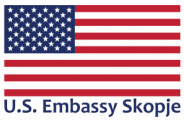In September last year, we revealed how the Russian Ministry of Foreign Affairs smeared the Baltic countries by claiming they have not become democracies respecting the rule of law. Despite the pushback, the Kremlin’s disinformation campaign has once again been dialed to history, due to the postponed Victory day parade celebrating the 75th anniversary of WWII.
This time, the kick-off came from the Twitter account of the Russian embassy in Estonia, sharing an article from Russia Beyond titled “Why the Baltics was a great place to live under the Soviets“.
The article itself, based constructed around a series of glossy photographs of Soviet-occupied Estonia, Latvia and Lithuania in the 1960s, 1970s and 1980s, was meant to showcase the Baltic States as the most privileged republics in the USSR and display “the best of what this gigantic country [i.e. the USSR] had to offer”. What the article fails to mention is that the Baltic States were illegally annexed by the Soviet regime and continued their resistance — first armed, later peaceful — throughout the decades of occupation.
The article makes a number of claims, rooted in the narratives of pro-Kremlin disinformation, and skips over the not-so-glossy aspects of what can only be understood as a deliberate editorial choice to whitewash Soviet occupation. It claims, for example, that “the radical Soviet-style reforms of the day were applied with much more caution” in the Baltic States, without even referring to the Soviet repressions. Notably, the article itself was published in mid-June, when the Baltic States commemorate mass deportations of their population to Siberia.
The article also includes many classical disinformation narratives such as: “Latvia, Estonia and Lithuania were considered among the most privileged of the 16 USSR republics.” And when you are occupied, it’s always nice to know that at least it is a privilege. In the mind of the occupying force, that is. And there were 16 republics only until 1956, after that there were 15.
According to them, “Baltic “territories”, with their Latvian, Lithuanian and Estonian populations, always enjoyed a special status, both as part of the Russian Empire and the USSR. Soviet authorities always tried to take into account the special historical and economic circumstances of this ‘European’ region that was so different from the rest of the country.” The truth is that the Baltics States were and remain a part of Europe. The dominating language in the USSR was Russian, and it was heavily promoted in schools and public life at the expense of local languages.
The article also alleges that the Soviet Union supported national cultures, while in reality culture was a servant of the regime. After WWII, the strict canon of Stalinist socialist realism prevailed in the Soviet Union, according to which artists had to mediate ideological messages from the Communist Party in a realist manner. After Stalin’s death, the Soviet society became more liberal and the Communist Party’s demands on art became less stringent, however, the official prescripts to Soviet culture endured until the 1980s.
You can read the whole article here.
Source: EUvsDisinfo


